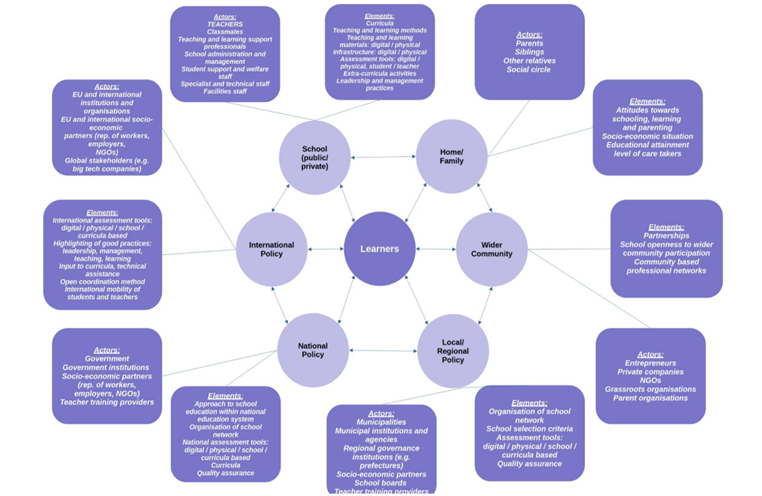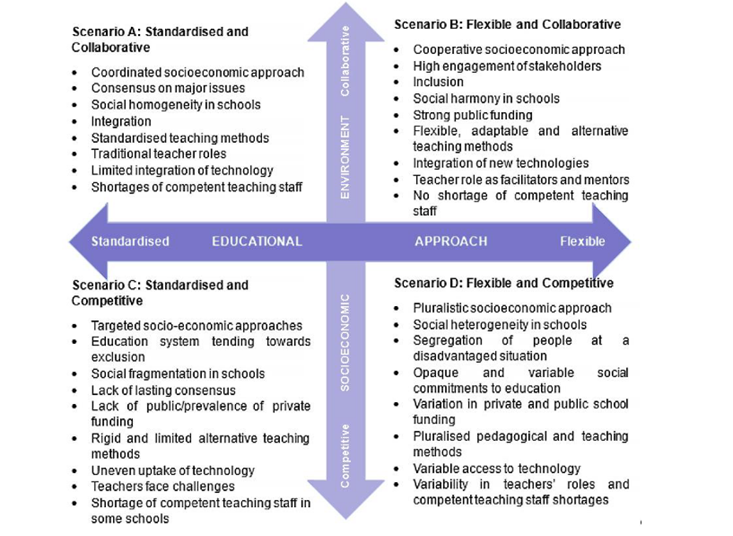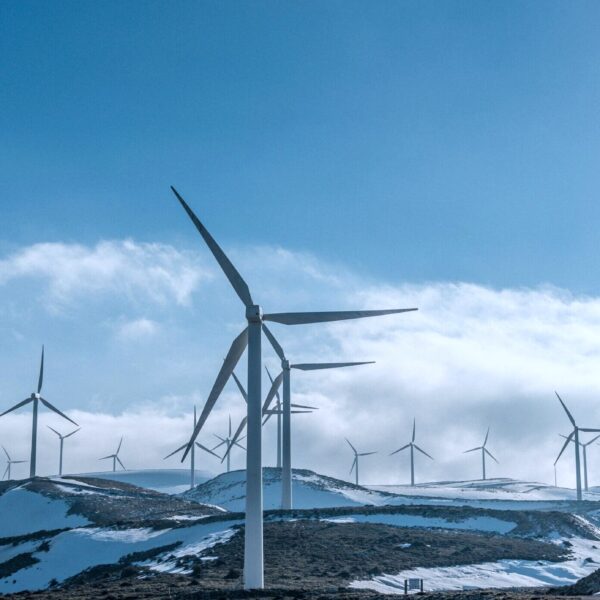How will a day of an EU school student look like in 2040? How do we want it to look like? What actions we need to take now to ensure that we are moving towards the preferred future and avoiding potentially harmful scenarios?
The answers to these questions were provided in the recent foresight study on the “Scenarios for the future of school education in the EU” carried out by Visionary Analytics in cooperation with ISINNOVA, Austrian Institute of Technology and 4strat with contributions of more than 80 European Commission officials, school education experts, representatives of teacher, student and headmaster umbrella organisations, and other stakeholders, from across the EU. The study provides four scenarios describing potential alternative futures of the school education in the EU by 2040 and recommendations on the policy measures that should be introduced or strengthened to achieve the most preferred scenario.
Mapping
The study began by mapping EU school education, to understand the elements constituting it and how they might be influenced by the different Factors of Change[1]. The main dimensions, actors, and elements identified in the mapping exercise are presented below:
Factors of Change
The four scenarios were drafted based on the identified key Factors of Change of school education in the EU. These include:
- megatrends – existing and clearly observable factors of change with long-term development paths at a global or large scale,
- general trends – an observed general tendency or direction of a development or change over time,
- emerging trends – an early sign of a tendency or direction of a development or change over time which is not yet confirmed or strengthened,
- weak signals – an early sign anticipating or pointing to possibly emerging issues which are not yet confirmed,
- “wild cards” or “black swans” – surprising and rare events that might constitute turning points in the evolution of a certain school system.
The final list of the Factors of Change (presented below) was identified through a thorough research process beginning with desk research and going on to include horizon scanning and a series of stakeholder involvement activities, including interviews, workshops, and a Delphi survey.
| Type of factor of change | Identified factors of change |
| Megatrends |
|
| General trends |
|
| Emerging trends |
|
| Weak signals |
|
| Wild cards |
|
The scenarios
The intersection of an educational approach axis (from standardised to flexible) and a socioeconomic environment axis (from competitive to collaborative) was selected as a backbone for the four-scenario development. The educational approach axis focuses on “what”, “how”, and “where” teaching and learning happens. The socio-economic environment axis focuses on overall social and economic conditions. The different directions of the potential developments of the Factors of Change were represented at the intersections of the two axes resulting in four contrasting scenarios. A summary of the key characteristics of the four scenarios is presented below:
Each scenario also includes one of the identified wild cards: A) major technological disruption; B) environmental crisis, caused by climate change; C) deep economic crisis in the EU; D) crisis of public school system. To illustrate the key developments of each scenario short descriptions of “A Day in the scenario” of a teacher, headmaster, parent, and student were developed.
What is the preferred scenario?
The multiple consultations of stakeholders found that the preferred future of school education in the EU by 2040 can mostly be found in the scenario B, ‘Flexible and Collaborative’. The extract of the description of the day in this scenario below provides a glimpse into the day of a parent in this scenario.
| A day in the Scenario B:
My name is Marc, and, as I drop my child off at “B” Primary School, I am filled with gratitude for an education system that values and considers the voices of all, including those of marginalised and underrepresented groups. With the goal of inclusion in mind, policies and initiatives ensure that all students have equal access to education, regardless of their background or personal circumstances. For my family, this is of utmost importance since we are keen to make sure that our daughter’s disability does not stop her from leading full a life as possible. “B” Primary actively promotes sustainable practices and environmental stewardship, instilling in our children a deep sense of responsibility and care for the planet. I love seeing how my child is excited about caring for the planet and sustainable practices. It is undeniable that her experiences at school have already transferred to our family’s daily routines. <…> |
Recommendations
As part of the study, recommendations on the policy measures which should be introduced or strengthened to help school education in the EU move towards the preferred future scenario were provided. Analysis of the current European Commission policy found that the majority of implemented or planned EU-level measures are aligned with the preferred scenario, however it is recommended to strengthen some existing policy measures and introduce new ones to help maintain this course. These recommendations to the European Commission, EU Member States, and other school education stakeholders came in multiple areas:
- Education funding,
- Inclusion of learners in a disadvantaged situation,
- Degree of digitalisation and existing/planned regulation,
- Pedagogical and teaching methods,
- Personalised and blended learning,
- Assessment methods,
- Teacher role, competences, and working conditions,
- AI adoption,
- Interdisciplinary learning,
- Sustainability and civic and citizenship education,
- Skill and competence development.
Interested in learning more?
If you are keen to learn more about this project, the findings, and to see the full list of recommendations, check out the full study here.
[1] Any change with influence on the system being studied that might unfold into different directions in the future. According to their importance and uncertainty, divided into five categories: 1) megatrends, 2) general trends, 3) emerging trends, 4) weak signals, 5) “wild cards” or “black swans”




